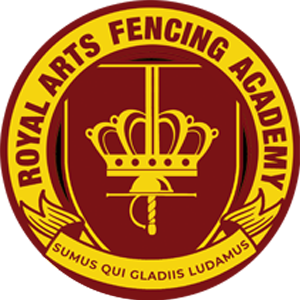What equipment do you need for fencing?
Fencing Equipment
Fencing has been around for centuries, but it was not until the 20th century that fencing became a popular sport at the Olympics. Check out the following
Fencing Shoes
Fence requires a great deal of agility, speed, and balance. A fencer must have excellent foot control and coordination, and should also have strong ankles. Good footwear is essential for safe and effective movement. Fence footwear can vary greatly in price depending upon the materials used. Some people choose to buy custom-fitted boots, while others prefer cheaper alternatives such as running sneakers. Whatever your choice may be, make sure that your footwear provides adequate support and comfort.
Body Cord
All fencing weapons make utilize a power source, which attaches to the weapon, goes into the fencer's clothing, and connects the other side on the fencing reel. Power sources are essential for fencers when practicing or fighting, as they are used to signal to the referees when a fencer is being hit. They are also vital for safety reasons, as if a fencer loses control of his/her weapon, he/she could injure himself/herself. Power supplies vary in price from $20 to $30.
Blades
A foil sword is made up of two parts; the hilt (the handle) and the tip (the point). It has no guard, but it is usually longer than
Steel fencing is usually manufactured using carbon steel, which makes them strong but brittle. They're often bent and may break if they get too sharp, but after some time, they become dull and need to be replaced. Fencing lengths vary depending on the sport. Youth fencers must fence with a short length of steel for their first few years of training. After that, they can switch to longer lengths of steel.
There are various types of skates, but each type has its own characteristics. You'll become familiar with them as you learn the sport.
There are three types of fencing blade materials:
The FIE is an international organization that governs fencing. Its mission is to promote fencing around the world. Fencing is a very popular sport, and one that requires expensive equipment. In order to keep costs down, the FIE decided that only approved fencers could use certain types of equipment. These are known as "non-FIE" (not approved) weapons. For example, if you wanted to fence with a foil, then your weapon would have to meet the standards set by the FIE. If your weapon did not pass these tests, then it was considered unsafe and thus illegal to use. However, if you wanted to compete in a tournament using a sabre, then your blade had to be approved by the FIE before it could be allowed into competition.
If you're looking for the best blades, then look for them from a reputable company. They're usually made in a well-know factory in Europe.
Chest Protector
A chest guard is a protective device worn around the chest region of a fencer during competition. Chest guards come in various shapes and sizes and are designed to protect the upper part of the body from potential injury caused by contact with another person’s weapon. They may range from simple padding to complex devices that cover the entire torso. Some chest guards are intended only for training purposes, while others are used exclusively during competitions.
Fencing equipment differs depending upon whether you're fencing with a sabre, an épée, or a foil. For sabres and épées, the equipment includes a headguard, a helmet, and a body protector; whereas for foils, the equipment includes a mask, gloves, and a guard.
Clothing
You might be able to practice without changing out of your regular workout clothes, but if you're going to train for hours at a time, you may want to change into something lighter and less sweaty.
Complete Electrical Epee
For fencing, if you're looking to fence, you will first require an entire set of fencing equipment, including everything needed to connect to the electric score board.
An electric fencing system consists of the following:
- Epee point (screw, blade, spring)
Every year, before the beginning of each tournament, the referees will check the equipment used by the competitors to ensure that everything works properly and that nobody gets hurt. They will also check the electronic scoreboard to make sure it doesn't malfunction and that nobody gets injured. Epees can range in price between $100 and $200, depending on what parts were assembled into them.
Complete Electrical Foil
Foil requires a fully functional foil weapon with all the electrical components needed to connect to an electrical scoring system. You cannot use any other type of foil weapon nor can you use any other type of electrical component for either weapon.
A complete foil consists of the following components:
- Foiling is when you use a special tool called a foiler to create an even coating of paint
Like in fencing, referees will test both fencers’ foil before the beginning of each bout, to ensure that their equipment is functioning properly and up to par.
Foilists will often use their electric lames to check if the scoring system is working properly. They may even score each other's foils to see if they're working correctly. Prices for an entire foil range from around $50 up into the hundreds of dollars.
Complete Electrical Saber
A complete electrical sabre is the simplest of all fencers' weapons. It's made up of three parts: the handle, the grip, and the weapon itself. The handle holds the grip, which holds the weapon. The weapon has no wires or blades; instead, it contains an electric circuit.
Fencing requires a great deal of skill and practice, especially if one wants to win. Because of this, fencing matches can take hours upon hours to complete. To ensure the safety of both fencer and audience, before a match begins, they must check the equipment and scoreboards to see how things stand. Epees and foils require much more expensive equipment, so fencer would rather spend money on these items instead of buying a cheap sabre. The price range for an epee is around $200-$500, and a foil costs anywhere from $300-$1000.
Epee Equipment
Epee Test Kit
Before the beginning of each fencing bout, the referees will perform three checks on both competitors' weapons. They will use a 750g weight and a shim to ensure the weapon is working correctly and meets the requirements of the tournament. If either fencers weapon fails one of those three checks then they receive a yellow cards before the start of the match. Because of this, it is very important to check your equipment before entering the arena. You can buy a complete testing package including a shim, weights, and a testing device for around £50. A good quality epees must have a solid connection so it is worth investing in a proper epees testing device.
Fencing Masks
The most common type of protective gear used in sports such as football, basketball, hockey, baseball, soccer, rugby, tennis, volleyball, boxing, wrestling, martial arts, and gymnastics. Mascots also often wear these items to protect themselves from injuries during fights. They are worn on the head and face, protecting against cuts and bruises. These can range from simple bandages to complete suits of armor.
A sabre (from French) is a type of sword used primarily in fencing. They are made of steel and have a single edge blade. In modern usage they are often used as an alternative to the épée due to their lighter weight and ease of handling. Their main advantage is that they do not require any special equipment to score them, unlike the épée. The sabre was invented by Jules Goupy de Failly in 1848. He also designed the first sabre to be used in competition, the "Failly" sabre. His design was copied by Émile Molitor, who improved upon it and introduced the current version of the sabre.
A sabre is a type of sword used primarily during fencing competitions. They were originally designed to be used against a single opponent, but can also be used in duels or fights between two people. Sabers are typically longer than epees, and are generally heavier. In addition to being used in combat, they are often used for ceremonial purposes. Epees are lighter and shorter than sabres, and are typically only used in combat situations. Epees cost around $50.
A fencing costume consists of a helmet (for protection), a chest protector (to protect your heart) and a pair of gloves (so you won't get cut). Fencing costumes come in two types: those made of leather and those made of plastic. Leather ones are more expensive ($200-$300) than the plastic ones ($100-$150). Both styles are very durable and last for a lifetime. Most people who compete in tournaments choose leather because it feels better against the skin. Plastic fencing costumes are cheaper ($50-$60) than leather ones, but they do not feel as good. They are also not as durable. However, if you're only competing once every three months, then plastic may be fine for you.
Foil Test Kit
Similar to epees, before foils match, refs also check both players' pikes, to make sure they're fully functional and up to par. In fencing, the ref will only perform the weight check, by putting a 250 g weight on each player's pike. A pike testing set consists of a pike testing weight, a pike body cord, and a testing box that simulates the electrical scoring system. Fencingists can test their pikes and body cords before stepping onto the piste and avoiding penalties for faulty equipment. A pike testing kits should cost you about $40.
Fencing Bag
Fencers often spend hours traveling for tournaments, and thus require the right gear to protect themselves. Fencer's gear is generally large enough to hold multiple weapons, and spacious enough to fit a fencer's helmet. Fencer's gear usually has two separate compartments and plenty of pockets. The best fencer's gear also has wheels, as all the fencer's gear can be extremely heavy. Prices range from cheap to expensive, depending on how much room and features the bag has. For instance, the cheapest models without any wheels and storage capacity can cost around $40, while the top models with tons of room and extra pockets can cost upwards of $300.
Fencing Pants
When purchasing your new pair of trousers for your next bout, you need to consider comfort first; then, if you want them to last longer than one match, you need to buy something that won't wear out quickly.
The pants usually have a pair of suspensory straps attached to them that goes around your waist and then across your back. These straps keep the pants from falling down during the bout. Although you may see some fencers wearing their pants without any sort of support, they should only be worn if you are just getting started. During actual matches, you should wear the correct type of clothing. Fence without the proper attire and you could end up hurting yourself. The cost of the uniform varies depending on what material you choose. Some cheaper options include cotton, nylon, polyester, spandex, and lycra. More expensive choices include leather, silk, and microfiber.
Fencing Repair Kit
It’s no surprise that fencing involves lots of small parts and electrical equipment. But even though there are plenty of things that go wrong during a match, people who fence regularly might be surprised by just how frequently they have to fix their gear.
As far as fencing equipment goes, there are some similarities among them, but they're also quite different. Therefore, the price of buying your own personal tools will depend on which fencing weapon you want to fix.
Conclusion
In conclusion, fencing is a sport that requires a lot of equipment. From the protective gear you wear to the weapons you use, fencing has a lot of new terms to learn. However, if you want to become a true fencer, you won't be able to succeed without investing in the right tools. So whether you're planning on joining a club or taking lessons from a professional coach, here are some of the pieces of equipment you'll need to get started.
The first piece of equipment you'll need is a pair of protective gloves. These are essential because they protect your hands from injury during training sessions and competitions. They also help keep your fingers warm, which is especially helpful when practicing techniques like parries and ripostes.
Next, you'll need a set of protective pads. These are used to cushion blows to the face, chest, and legs. They're also useful for protecting against cuts and bruises. Finally, you'll need a helmet. This helps prevent injuries to your head and neck, and it protects you from falling objects.
Once you have these items, you're ready to begin learning the basics of fencing. But don't worry; you don't need to know anything about the history of the sport or how to hold a sword to join a club or take classes. Instead, focus on mastering the fundamentals of technique and strategy. Once you've mastered those, you'll be ready to move onto the next level of competition.














